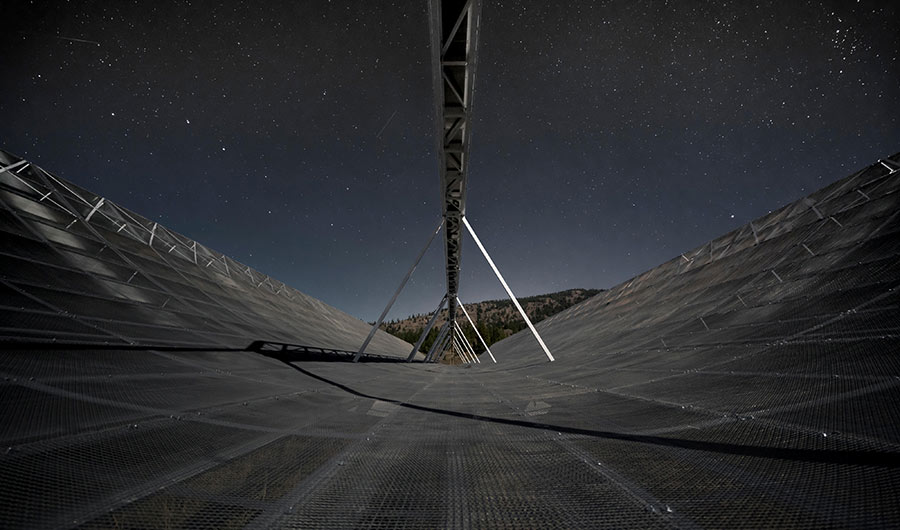Astronomers Trace the Origins of Radio Pulses in Our Galaxy

The Canadian Hydrogen Intensity Mapping Experiment (CHIME) telescope, one of the telescopes researchers used to observe a radio burst believed to be from a massive dead star with a powerful magnetic field.
Andre Renard / CHIME Collaboration
(Inside Science) -- Astronomers have spotted a handful of extremely intense and brief blasts of radio waves since 2007, but they have yet to pin down exactly what’s creating them. The blasts have fueled all sorts of speculation about their origins, from exploding or colliding stars to alien civilizations.
Now the speculation may soon be resolved, with three teams of scientists finally finding a clear and plausible source for the puzzling pulses, known as "fast radio bursts" or FRBs. Using different telescopes, teams in the United States, Canada and China independently studied an FRB from April that originated 30,000 light-years away and lasted just a millisecond, and all three came to the same conclusion: It probably originated from a magnetar in our own galaxy.
A magnetar is the rotating core of a massive dead star with a powerful magnetic field. Magnetars are so dense that a teaspoon of one would weigh as much as 1,000 pyramids of Giza, according to Christopher Bochenek, a Caltech astronomer and lead author of the U.S.-based research. The researchers published their findings today in the journal Nature.
"This discovery makes it plausible that most fast radio bursts come from magnetars," said Bochenek. The radio burst they examined was thousands of times stronger than anything else in the Milky Way, he said.
Until now, astronomers have been struggling to explain why some FRBs aren’t one-off events like supernova explosions but seem to repeat themselves instead. Magnetars could provide the answer, since they spin slowly and flare periodically, like a lighthouse beacon. They’re also abundant enough both inside and outside our galaxy to be the sources of other bursts scientists have seen.
Bochenek and his team scoped out the FRB with a network of small radio antennas known as STARE2, which is spread out in California and Utah to help identify bursts' locations and distinguish them from radio signals produced by people on Earth. Canadian astronomers using the massive CHIME telescope in British Columbia similarly attributed the FRB to a magnetar, and a Chinese collaboration had consistent findings with its own radio telescope.

